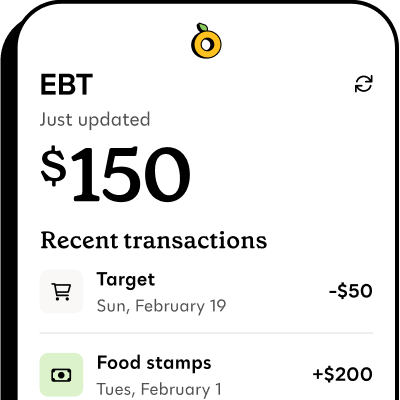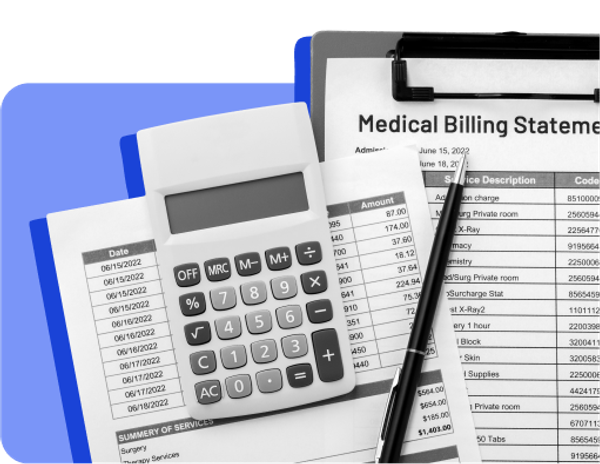What’s the difference between Medicaid and Medicare?

Medicare and Medicaid are both government health insurance programs, but they serve different groups: Medicare is primarily for people 65 and older and certain younger people with disabilities, while Medicaid is a need-based program for people with limited income, disabilities, or people who are pregnant.
But some people can get both Medicaid and Medicare: if you're 65 or older and meet your state's income requirements for Medicaid, you can sign up for both programs as a “dual eligible.”
The three key differences between Medicaid and Medicare are:
- Who can get it: Medicaid serves low-income Americans, regardless of age. Medicare is for people 65 and older, or younger people with certain disabilities.
- What you pay: With Medicaid, you usually don't pay anything for covered services, though you might have small copays (a fixed fee when you visit the doctor or pick up a prescription). With Medicare, you typically pay premiums (your monthly insurance cost), deductibles (the amount you pay before insurance kicks in), and coinsurance (your share of costs after you meet your deductible).
- Coverage: Medicare has four parts covering different things like hospital stays and prescription drugs. Medicaid often covers things Medicare doesn't, like long-term care and personal care services.

Propel is the #1-rated EBT balance checking app
Medicaid vs. Medicare: The key differences#medicaid-vs-medicare-the-key-differences
What is Medicaid?#what-is-medicaid
Medicaid helps people with limited incomes and resources get healthcare coverage. Each state runs its own Medicaid program, so what you can get and who qualifies varies depending on where you live.
Your state may have a different name for its Medicaid program, like “Medi-Cal” or “MassHealth.”
Medicaid doesn't send you money—it pays your healthcare providers directly. You might need to pay a small fee—a copay—for some services, but most covered care is free.
At minimum, your state’s Medicaid program covers:
- Hospital stays and skilled nursing care
- Doctor visits and outpatient care
- Routine check-ups and diagnostic tests
- Lab work and X-rays
- Midwife services
- Pediatric and family nurse practitioner visits
- Transportation to medical appointments
- Help quitting tobacco if you’re pregnant
- Dental care
You might qualify for Medicaid if you’re low-income and you:
- Are pregnant: Your baby will be covered too once they're born
- Have children 18 or younger: Many states cover children up to 21 in income-eligible households. If your child needs nursing home-level care but could stay home with proper support, they might also qualify
- Are 65 or older, blind, or have another qualifying disability
- Are a teenager on your own: Some states let you apply for yourself, or any adult can help you apply.
- Are eligible for Medicare: If you already have Medicare but have limited income, you might qualify for Medicaid too.
How do I sign up for Medicaid?#how-do-i-sign-up-for-medicaid
There are two ways to apply for Medicaid:
- Through your state: Contact your state's Medicaid office directly.
- Through HealthCare.gov: Create an account and fill out an application. Your information will go to your state for the final eligibility decision.
You can also call the Marketplace at 1-800-318-2596 to apply over the phone. (For TTY services, call 1-855-889-4325.)
You can apply for Medicaid any time of year, not just during open enrollment periods.
What is Medicare?#what-is-medicare
Medicare is federal health insurance for people 65 and older and individuals with certain qualifying disabilities or conditions like permanent kidney failure or ALS (Lou Gehrig’s disease).
People who have received Social Security Disability Insurance (SSDI) for more than two years may also qualify for Medicare.
Medicare coverage has four parts:
- Part A (Hospital Insurance): Covers hospital stays, skilled nursing facilities, hospice care, and some home health services.
- Part B (Medical Insurance): Covers doctor visits, outpatient care, medical supplies, and preventive services.
- Part C (Medicare Advantage Plans): Private insurance plans that include Part A and Part B, often with extra benefits.
- Part D (Drug Coverage): Covers prescription medications.
Most people don't pay a premium for Part A if they or their spouse paid Medicare taxes while working (usually at least 10 years). You'll pay a monthly premium for Part B, and the amount can change each year based on your income. Parts C and D premiums vary by plan.
If you get Social Security retirement benefits, your Part B premium is usually taken out of your Social Security check automatically. If not, Medicare will send you a bill.
How do I sign up for Medicare?#how-do-i-sign-up-for-medicare
- If you get Social Security or Railroad Retirement benefits: You're automatically enrolled in Medicare Parts A and B when you turn 65. Your Medicare card will arrive about three months before your 65th birthday—no action required.
- If you're under 65 with a disability: After getting disability benefits for 24 months, you're automatically enrolled in Medicare. Your card will arrive about three months before your Medicare starts.
- If you don't get Social Security: You can apply for benefits online on the Social Security website, by phone through the Social Security national customer service line (1-800-772-1213), or in person at your local Social Security office.
Who can get both Medicare and Medicaid?#who-can-get-both-medicare-and-medicaid
Some people qualify for both Medicare and Medicaid. This usually happens when someone is 65 or older (qualifying them for Medicare) but also has limited income (qualifying them for Medicaid).
Having both Medicare and Medicaid gives you more coverage than either one alone. Medicaid can help pay for Medicare costs like premiums and deductibles, plus cover services Medicare doesn't, like nursing home care and personal care expenses.
How can I find low-cost health insurance?#how-can-i-find-low-cost-health-insurance
Most states use HealthCare.gov to help people find and sign up for health coverage. With one application, you'll see if you qualify for:
- Free or low-cost coverage through Medicaid or CHIP for children
- Savings on a Marketplace health plan
The Children's Health Insurance Program (CHIP) covers children in families that earn too much for Medicaid but still need help paying for healthcare.
CHIP also covers pregnant people in some states. Each state runs its own CHIP program with different benefits, but all provide comprehensive coverage including check-ups, shots, doctor visits, and prescriptions.
When you apply for Medicaid, you'll also find out if your children qualify for CHIP.
If your state has its own marketplace, you won't use HealthCare.gov—you'll use your state's website instead.
How do I find a doctor that takes Medicare and Medicaid?#how-do-i-find-a-doctor-that-takes-medicare-and-medicaid
For Medicare: Use the Care Compare tool on Medicare.gov to search for Medicare providers by address, city, state, ZIP code, provider type, or doctor's name.
For Medicaid: Contact your health plan or your state's Medicaid office. Since Medicaid varies by state, they'll have the most up-to-date list of providers in your area.







